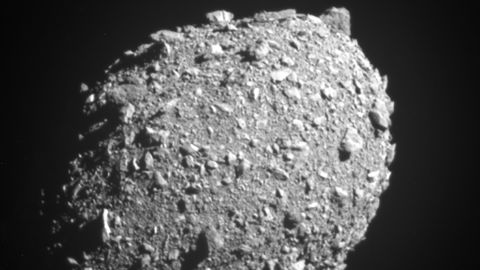NASA hits bullseye with DART last Monday
Deck: After 10 months in space, NASA’s first attempt at planetary defense technology successfully impacts asteroid target

October 3, 2022
On September 26, as a part of NASA’s planetary defense strategy, the impact DART, Double Asteroid Redirection Test, made with the asteroid demonstrated a viable technique to protect the planet from an asteroid impact or comet. DART targeted the asteroid moonlet Dimorphos, a small body with a diameter of only 530 feet. It orbits a more giant 2,560-foot asteroid called Didymos, and neither asteroid posed a direct threat to Earth. DART’s one-way trip confirmed to NASA that they can successfully navigate a spacecraft to collide intentionally with an asteroid to deflect it, which is known as kinetic impact. NASA’s investigation team will now observe Dimoprhos using telescopes to confirm whether or not DART’s impact altered the orbit around Didymos.
DART’s sole instrument is the Didymos Reconnaissance and Asteroid Camera for Optical navigation, or DRACO, in part with sophisticated guidance, navigation, and a control system that works in tandem with Small-body Maneuvering Autonomous Real Time Navigation algorithms (SMART Nav) enabled DART to identify and distinguish between the two asteroids, targeting the smaller one. These systems then guided DART through the final 56,000 miles of space into Dimoprhos, crashing into it at about 14,000 mph to slow the asteroid’s orbital speed. DRACO’s final images, obtained by DART seconds before impact, revealed the surface of Dimorphos in close detail.
Now NASA knows it’s possible to protect Earth from an Earth-Bound asteroid in the future, due to DART’s invaluable mission. “This demonstrates we are no longer powerless to prevent this type of natural disaster. Coupled with enhanced capabilities to accelerate finding the remaining hazardous asteroid population by our next Planetary Defense mission, the Near-Eart Object (NEO) Surveyor, a DART successor could provide what we need to save the day,” said Lindley Johnson, NASA’s Planetary Defense Officer on the NASA TV website.





